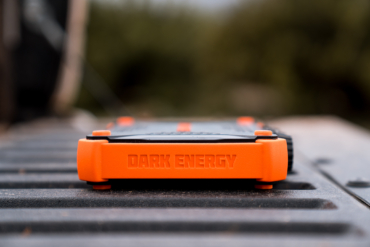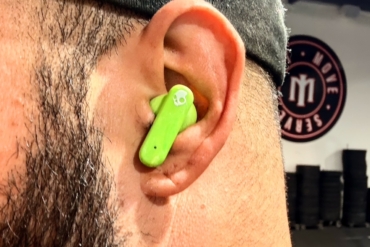The Gear Junkie Scoop: Mila PLS 100 headlamp
By STEPHEN REGENOLD
Touted as a “ridiculously bright headlamp for serious users,” the Swedish-designed and manufactured Mila PLS 100 was for years unlike any recreational light source available in this country. But a new U.S. distributor, Mila USA (www.milausa.com), now makes the wearable spotlight available for nocturnal athletes on this side of the Atlantic.
Developed for nighttime skiing, running, climbing, orienteering and adventure racing, the Mila’s halogen bulbs produce a wide-angle bubble of light, a yellow cloud of virtual sun that stretches hundreds of feet into dark night. You can pedal full speed while riding singletrack after dark or swing your head to reveal exact topographic details on the land while running an orienteering course.
The company quotes the headlamp as producing 300 lumens of light. This beam, in my test, lit up the nighttime woods easily 300 feet ahead. Other headlamps and bike lights — including the Petzl ULTRA and Light & Motion’s Seca 700 Race, to name a couple — are just as bright. But the Mila has a wider beam, its 3.5-inch aluminum reflector dispersing a glow at an angle that reaches almost to the periphery of your vision.

Mila PLS 100 headlamp
My experience with this light, which costs a hefty $329, had its ups and downs. While the wide-angle view of the nighttime woods was great, I found the yellow glow of the halogen bulbs to be inferior to the crisp white of the L.E.D. lamps to which I’ve grown accustomed. Put side by side with the aforementioned Light & Motion Seca 700 Race, a $550 bike light, the Mila’s glow produced a much lower-contrast, lower-detail look at the woods. Leaves and roots and sticks popped off the ground in high detail with the Seca; those same features were seeable with the Mila, though not as crisply visible on the ground.
The form factor of the Mila is old school. The battery pack, a rechargeable block of nickel metal hydride cylinders stacked together and sealed in shrink-wrap plastic, looks homemade. The headlamp comes mounted on an elaborate strap system and sticks out three inches from your forehead, making for a gangly setup that two times snagged a branch and was knocked off my head during an orienteering race.
To pull enough power for the 10- and 20-watt halogen bulbs, the Mila’s battery pack is independent and linked via a power cord to the lamp. You stow the heavy (1 pound 5 ounce) battery in a back pants pocket or in a backpack while on the move. For tall athletes, the cord could be a little longer. I’m 6 foot 1 inch and the cord barely accommodated, stretching tight from the headgear to my back pocket, though too short to be stowed away up front in a hip pocket.

The Mila PLS 100’s battery pack
The whole setup weighs under two pounds, which is reasonable. And despite my gripes, this bright lamp costs a couple hundreds dollars less than competing products like the Petzl ULTRA and the Seca 700 Race.
Mila headlamps, which have been popular in Scandinavia since the 1980s, come from an environment where for many months each winter it is light only a few hours per day. But that doesn’t limit outdoor activities, as the hearty Swedes and Norwegians keep their running and orienteering clubs functioning winterlong by the light of head-mounted artificial suns.
Lower latitudes in North America keep our cities lit for more hours each day. But winter darkness prevails still during evening training time, and early sunsets can zap motivation to play outdoors. This pricey headlamp is an investment that buys you more time to train or practice at night for your sport.
—Stephen Regenold writes the weekly Gear Junkie Scoop for Outsidemag.com and TheGearJunkie.com.






